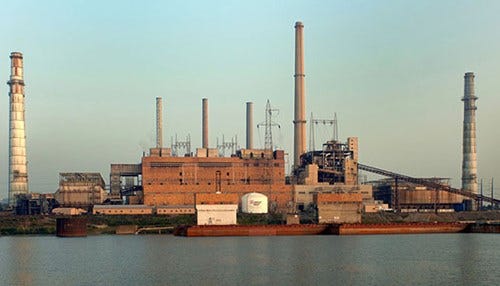Both Sides Weigh In on New Coal Rules
 (Image courtesy of Indiana Michigan Power)
(Image courtesy of Indiana Michigan Power)
Subscriber Benefit
As a subscriber you can listen to articles at work, in the car, or while you work out. Subscribe NowThe Trump administration’s proposed Affordable Clean Energy rule is drawing mixed reactions from Indiana stakeholders. Indiana Coal Council President Bruce Stevens says the move reverses "unprecedented overreach" of previous regulations and will give states more flexibility. Hoosier Environmental Council President Jesse Kharbanda believes the plan will "dramatically miss" the goal of cutting greenhouse gas emissions and could lead to public health issues.
You can find more information from the Environmental Protection Agency on the proposed rule by clicking here. In a release, the EPA says the Affordable Clean Energy Rule "empowers states, promotes energy independence, and facilitates economic growth and job creation."
Statement from Indiana Coal Council President Bruce Stevens:
The proposed Affordable Clean Energy rule returns regulation of power-plant emissions to a legal framework following unprecedented overreach. The intent of the Clean Power Plan was to choose winners and losers with the nation’s energy generation — and to the detriment of states such as Indiana that use coal as a main source of electricity.
An analysis of the Clean Power Plan showed it would have forced retiring coal-based generating capacity capable of serving 24 million homes, and costing consumers an estimated additional $214 billion for electricity between 2022 and 2030. The previous rule would have caused a significant loss of high-paying coal related jobs in Indiana and elsewhere while providing no meaningful impact on the planet’s climate.
The Affordable Clean Energy rule as a replacement recognizes each state is unique in fuel sources that best provide for its electrical generation rather than federal government mandates.
Statement from Hoosier Environmental Council President Jesse Kharbanda:
"The significant weakening of the Clean Power Plan under the Trump EPA provides far less incentive for utilities to modernize their electric power system compared to the original plan proposed during the Obama Administration. That means our air quality won’t be as be good as it could have been — by the Trump EPA’s own Regulatory Impact Analysis — which will likely lead to needlessly higher levels of asthma and other respiratory illnesses than had the Obama EPA plan remained. Furthermore, by drastically limiting the tools that investor-owned utilities can employ to cut emissions (based on our preliminary understanding of the plan), the cost to cut a unit of emissions may likely be higher — not lower — than the original plan. In short, the Trump plan will dramatically miss the overarching goal of the original plan to significantly, though steadily, cut greenhouse gas emissions and do so in a way that may well be economically inefficient compared to a Clean Power Plan that is centered around end-use energy efficiency."
